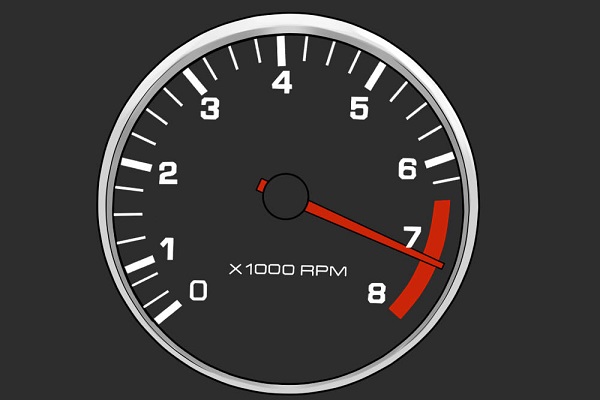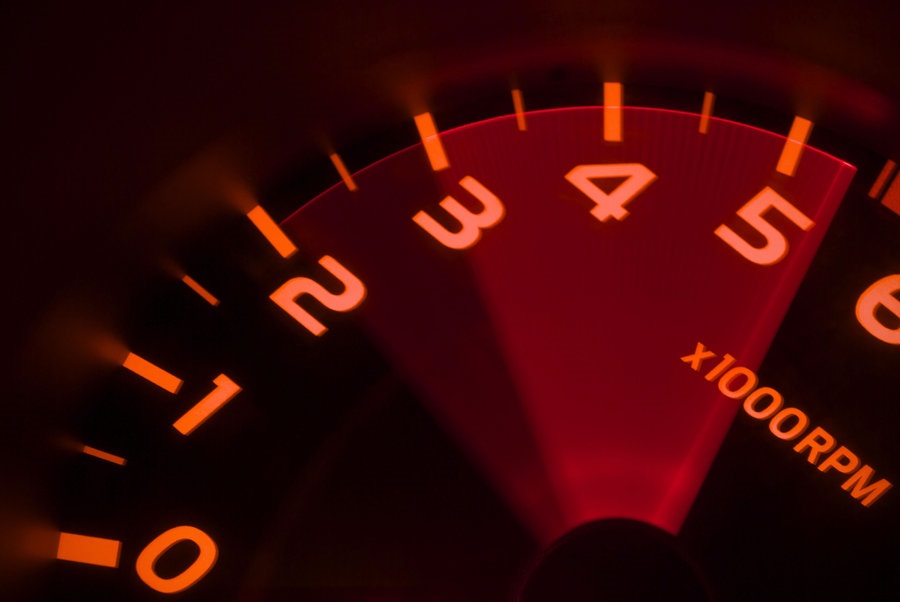All You Need to Know About RPM Gauge
Almost all cars these days come with an RPM gauge or a Tachometer. Before I begin, I would like to discuss a little about what RPM means. RPM stands for revolution per minute. The pistons of the engine are connected to the crankshaft. When the engine is turned on, the crankshaft begins to turn. This turning effect causes the pistons to move up and down in the cylinder (of the block). The up and down motion of the pistons causes the crankshaft to rotate. One complete rotation of the crankshaft is called a revolution. RPM is the number of revolution made in one minute.
Why is it important to know about the RPM of the engine?
The RPM gauge can be used to understand a lot of things about the engine of a car. The RPM gauge helps to give the driver an idea of when to shift gears (on a manual transmission). Shifting gears at the right RPM also helps in improving fuel efficiency of the car. The RPM gauge also helps to identify a number of problems in the engine or transmission.
The RPM gauge indicates the revolutions that the engine makes in one minute. It is measured in multiples of 1,000. Hence, if the needle of the RPM gauge is on 4, it means the engine is turning at 4,000 RPM. The RPM gauge has a high range that is marked in red (red line). Driving the car (constantly) at the highest RPM results in the engine being damaged. Therefore it is recommended not to cross the red line of the RPM meter, especially when shifting gears.

How to use the RPM gauge to shift gears smoothly?
If you own a manual transmission car, the RPM gauge can help you to shift gears smoothly without over exerting the engine. When the car is idle, gently press the accelerator pedal to increase the RPM to about 1300 RPM or 1500 RPM then gently release the clutch. Alternatively, you can gently release the clutch and when the RPM touches 500, gently press the accelerator (though this method might cause the car to jerk a little). When shifting to a higher gear, it’s recommended to rev the engine up to about 3000 or 3500 RPM. If you want to accelerate quickly (hard acceleration) shift the gear up when the RPM gauge touches 5000RPM.

RPM gauge tells you about the engine’s performance
The RPM gauge can tell the driver a lot about the engine. Always observe the RPM gauge when the car is idle and in motion.
RPM Gauge when the car is Idle: When the car is idle, the needle of the RPM gauge should be steady (around 800RPM). A steady needle when the car is not in motion indicates the engine is working properly. Also, when the AC is turned on, the RPM should fluctuate by 100 RPM every 10 seconds. When the engine is warm, and the RPM drops by a few 100 RPMs, it indicates the engine may have some problems in it. Fluctuations of the RPM needle indicates the engine might be misfiring.
RPM gauge when the car is in motion: At constant speed, if the RPM gauge is steady but your speed begins to drop, this indicates your engine might be having some problem (possibly a clutch problem). If the RPM gauge unexpectedly goes up, while the car is at steady speeds, this is an indication of some problem with the fuel, which means the engine needs diagnosis.
To extend and maintain the life of the car’s engine, the following are things you should keep in mind
- Observe the RPM gauge and avoid shifting gears at the red line area of the gauge.
- When downshifting, go down gear by gear. Downshifting to a very low gear increases the chances of touching the red line of the RPM gauge.
- Avoid sudden acceleration or hard acceleration to speed up, as this can cause the engine to over rev.
The RPM gauge is meant to help the driver to operate the car more efficiently. Knowing the RPM to shift gears helps to improve fuel efficiency and reduces the risk of premature engine damage. You can also refer to the owner manual of your car to understand more about your car.


Just for trivia, there are cars with RPM meters in x100 instead of x1000, then the dial reads 10, 20, 30 and so-on.
Recently they have started installing RPM gauges because of 3-valve per cylinder and 4-valve per cylinder (this 16-valve fashion is a trend-setter). A 2-valve per cylinder can generally not send enough fuel into the combustion chamber that engine could reach high enough RPM to be able to damage itself. And that is the reason why Mehran and Alto do not have RPM meter while Swift and Wagon-R have.
Another reason: In the olden golden days, only sports cars had RPM meters. In the recent days, when they started putting spoilers and other accessories on normal cars just to make them look “cool”, they have also started putting the RPM meter because it looks cool. And that is the reason Wagon-R and City have RPM meter but do not have the temperature gauge as it does not move and is lots boring.
City does not have a temperature guage? Lol. How the hell did I miss that 😮
Yup City doesn’t have Temp gauge. It has a Temp switch which activates on high temp.
Most of the time I learn a lot from the comment section rather than the article itself.
RPM Gauge when the car is Idle:when the AC is turned on, the RPM should fluctuate by 100 RPM every 10 seconds. ? Why any reason cause, explanation for this change pls.
if the RPM gauge is steady but your speed begins to drop, this indicates your engine might not have any problem but commonest reason is that you might be going uphill. If the RPM gauge unexpectedly goes up, while the car is at steady speeds, this is not a problem either you are going down hill or your automatic transmission has downshifted a gear.
If the rpm goes unexpectedly up at a steady speed it could also indicate a burnt clutch and pressure plate :p